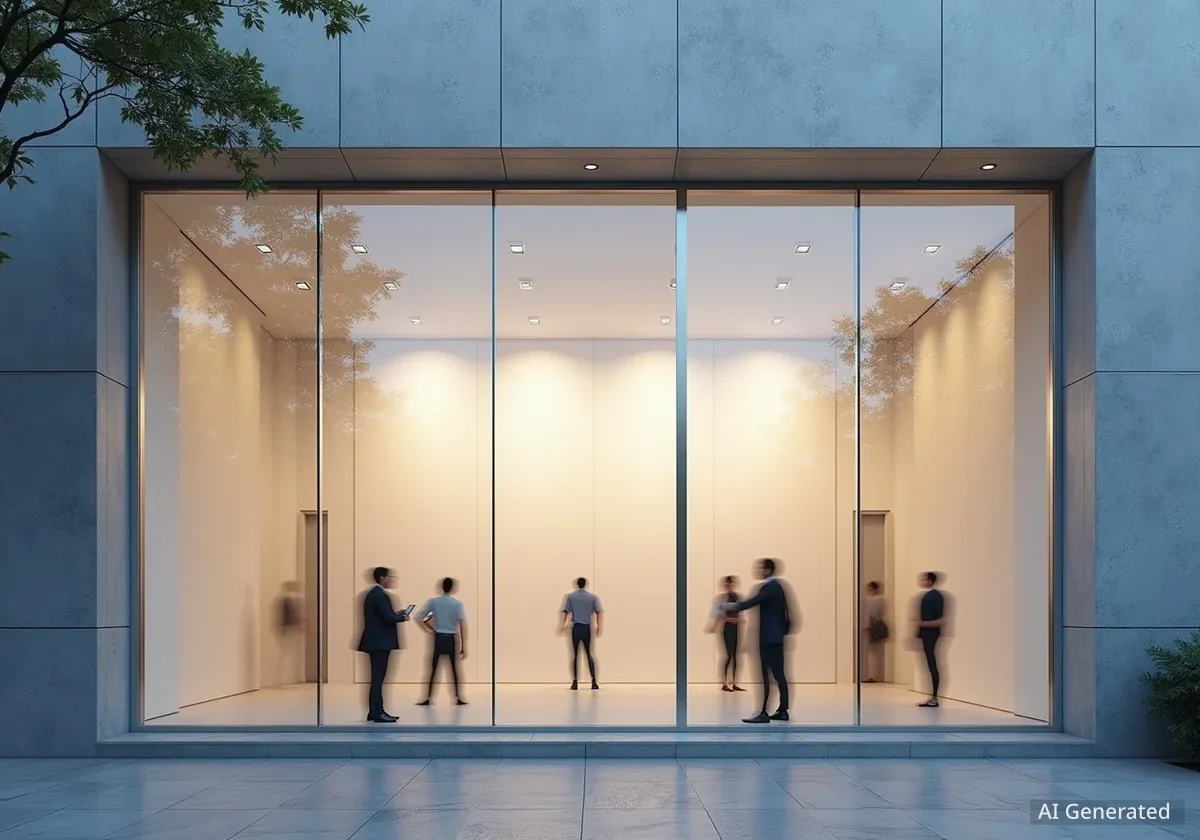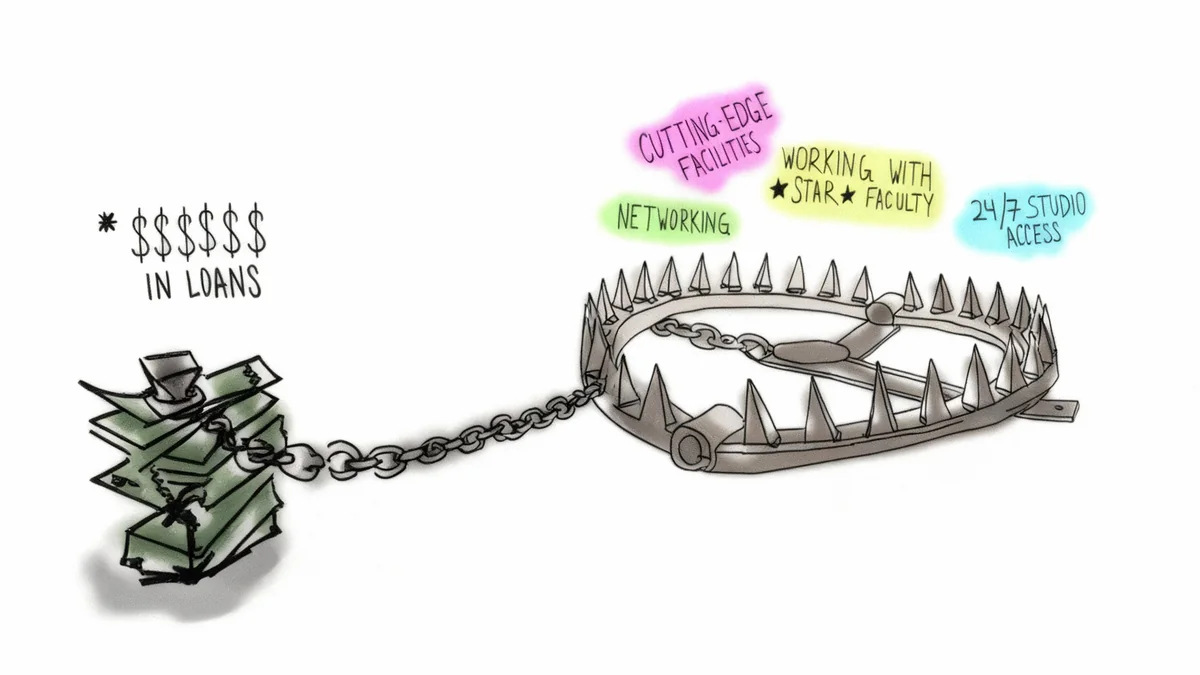The University of California, Irvine (UCI) has officially acquired the Orange County Museum of Art (OCMA). This acquisition marks a significant expansion of UCI's cultural footprint in the region. The museum will now operate under a new name: the UC Irvine Langson Orange County Museum of Art, reflecting substantial support from university patrons Jack and Shanaz Langson.
This merger brings the museum's 54,000-square-foot facility, its permanent collection of over 9,000 artworks, and its staff under the university's oversight. The move aims to enhance cultural offerings, foster academic research, and inspire a broader audience across Orange County.
Key Takeaways
- UCI has acquired the Orange County Museum of Art.
- The museum is now named the UC Irvine Langson Orange County Museum of Art.
- It includes a 54,000 sq. ft. building and a collection of over 9,000 objects.
- Museum staff are now UCI employees.
- All planned programming through 2026 will continue.
- The acquisition fulfills a long-standing university goal for a major art museum.
New Identity and Expanded Collections
The newly named UC Irvine Langson Orange County Museum of Art will integrate its existing collection with significant holdings from the university. This includes works from UCI's Gerald E. Buck Collection and the Irvine Museum Collection. These additions will greatly expand the range of art available for public viewing and academic study.
The museum building, designed by Thom Mayne of Morphosis, opened in 2022. It represents a modern architectural landmark in Orange County. Its acquisition by UCI ensures its continued role as a central cultural institution.
Museum Details
- Building Size: 54,000 square feet
- Construction Cost: $98 million
- Permanent Collection: Over 9,000 objects
- Architect: Thom Mayne of Morphosis
- Opening Year: 2022
The museum is located approximately six miles north of the main UCI campus. This distance will be bridged by a planned shuttle service. This service will connect the museum, the university campus, and the 9,000-square-foot Jack and Shanaz Langson Institute & Museum of California Art. The Langson Institute is situated roughly halfway between the campus and the new museum, creating a cohesive arts corridor.
Operational Changes and Leadership Transition
As part of the acquisition, all current staff members of the former Orange County Museum of Art have transitioned to become employees of the University of California, Irvine. This ensures continuity in operations and preserves the expertise of the museum's team.
All programming scheduled through 2026 will proceed as planned. This commitment provides stability during the merger process. It also assures the public that ongoing exhibitions and educational initiatives will continue without interruption.
"UC Irvine is committed to ensuring that the region benefits from a world-class art museum that enriches the cultural fabric of Orange County, advances groundbreaking scholarship, nurtures the next generation of creators and thinkers, and inspires curiosity and connection across diverse audiences," said Howard Gillman, the university's chancellor.
The university is actively searching for a new executive director to lead the institution. This new director will succeed Heidi Zuckerman, whose contract concludes in December. Zuckerman has served in the role for nearly five years, overseeing the museum's recent expansion and relocation.
Background on UCI's Art Collections
UCI has long sought a dedicated university museum. This desire dates back nearly a decade. The university's collections include significant bodies of work, such as early Californian art acquired in 2016 when the Irvine Museum dissolved. It also holds more than 3,000 works from the collection of real estate developer Gerald Buck, which UCI acquired after his death in 2013. These collections will now have a prominent public home.
Precedents in Southern California
The merger between UCI and the Orange County Museum of Art is not without precedent in Southern California. Similar integrations between universities and art museums have occurred successfully in the past.
For example, in 2013, the Pacific Asia Museum in Pasadena merged with the University of Southern California (USC). This merger provided crucial financial stability to the museum. It allowed the institution to close for over a year to undergo extensive renovations and retrofitting of its 1929 building, which features a design inspired by a traditional Chinese palace.
Another notable example is the Hammer Museum in Los Angeles. Its continued existence is a direct result of a merger with the University of California, Los Angeles (UCLA). After its founder, Armand Hammer, died shortly after its opening in 1990, the museum faced an uncertain future. UCLA took over the institution in 1994, ensuring its long-term viability and growth.
Benefits of University-Museum Partnerships
- Increased Stability: Universities often provide financial and administrative support.
- Expanded Resources: Access to academic expertise, research facilities, and student talent.
- Broader Reach: Enhanced educational programs and community engagement.
- Collection Growth: Opportunities to combine and showcase diverse art collections.
- Public Access: Often leads to increased accessibility for students, faculty, and the public.
These historical examples demonstrate the potential for such partnerships to create more robust and impactful cultural institutions. The UCI acquisition of OCMA aligns with this trend, promising a strengthened art presence for both the university and the wider Orange County community. The university's commitment to maintaining existing programming and integrating staff highlights a thoughtful approach to this significant transition.
The combined entity is expected to become a major hub for art education, exhibition, and cultural exchange in Southern California. It will serve students, faculty, and the public, creating new opportunities for engagement with diverse artistic expressions.




